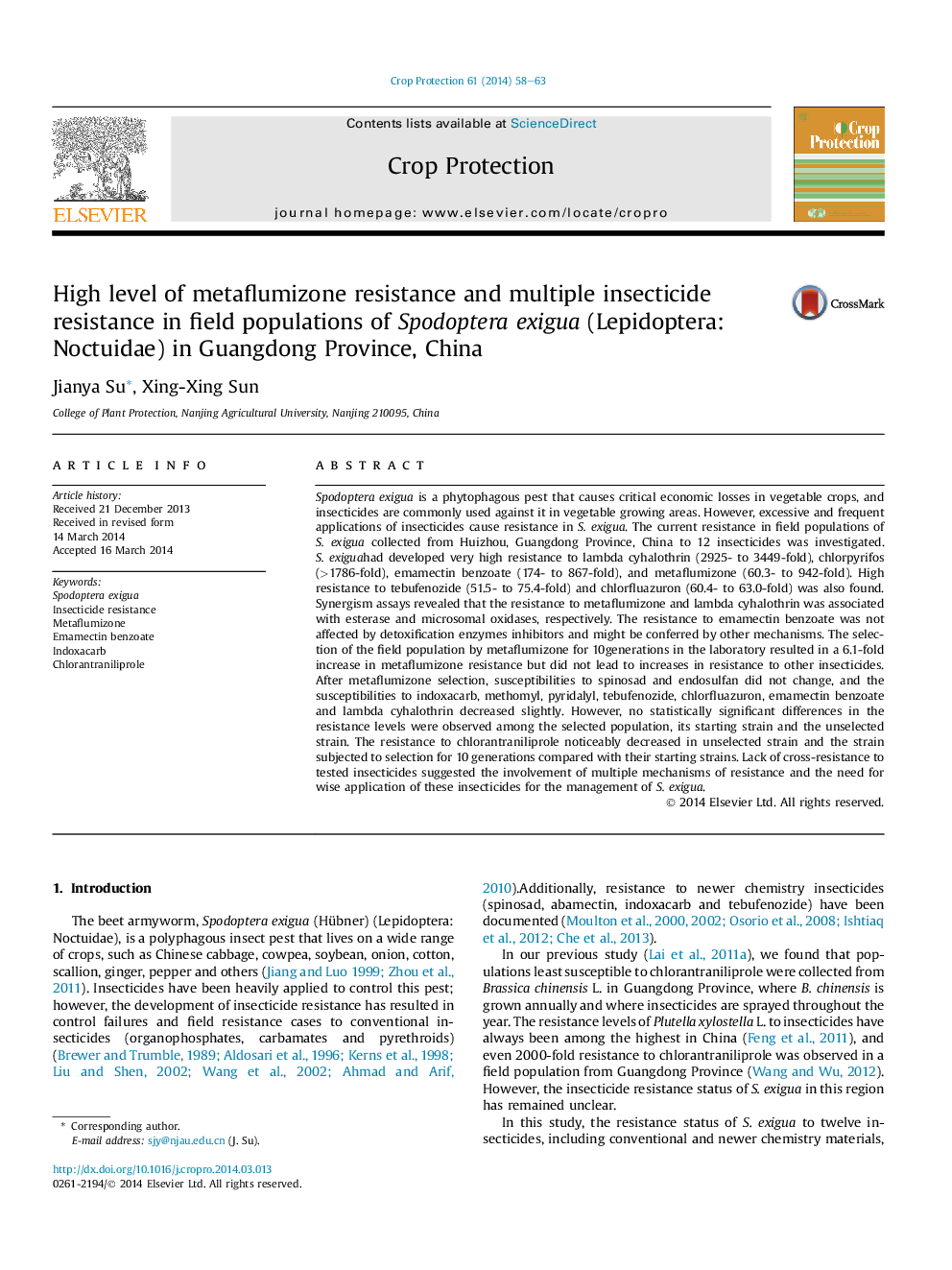| کد مقاله | کد نشریه | سال انتشار | مقاله انگلیسی | نسخه تمام متن |
|---|---|---|---|---|
| 4505908 | 1624326 | 2014 | 6 صفحه PDF | دانلود رایگان |

• Field population of Spodoptera exigua from Huizhou developed high resistance to metaflumizone.
• This insect developed high resistance to lambda cyhalothrin, chlorpyrifos, emamectin benzoate, tebufenozide and chlorfluazuron.
• Selection with metaflumizone resulted in 6.1-fold increase in resistance.
• There were no cross-resistance between metaflumizone and other insecticides.
Spodoptera exigua is a phytophagous pest that causes critical economic losses in vegetable crops, and insecticides are commonly used against it in vegetable growing areas. However, excessive and frequent applications of insecticides cause resistance in S. exigua. The current resistance in field populations of S. exigua collected from Huizhou, Guangdong Province, China to 12 insecticides was investigated. S. exiguahad developed very high resistance to lambda cyhalothrin (2925- to 3449-fold), chlorpyrifos (>1786-fold), emamectin benzoate (174- to 867-fold), and metaflumizone (60.3- to 942-fold). High resistance to tebufenozide (51.5- to 75.4-fold) and chlorfluazuron (60.4- to 63.0-fold) was also found. Synergism assays revealed that the resistance to metaflumizone and lambda cyhalothrin was associated with esterase and microsomal oxidases, respectively. The resistance to emamectin benzoate was not affected by detoxification enzymes inhibitors and might be conferred by other mechanisms. The selection of the field population by metaflumizone for 10generations in the laboratory resulted in a 6.1-fold increase in metaflumizone resistance but did not lead to increases in resistance to other insecticides. After metaflumizone selection, susceptibilities to spinosad and endosulfan did not change, and the susceptibilities to indoxacarb, methomyl, pyridalyl, tebufenozide, chlorfluazuron, emamectin benzoate and lambda cyhalothrin decreased slightly. However, no statistically significant differences in the resistance levels were observed among the selected population, its starting strain and the unselected strain. The resistance to chlorantraniliprole noticeably decreased in unselected strain and the strain subjected to selection for 10 generations compared with their starting strains. Lack of cross-resistance to tested insecticides suggested the involvement of multiple mechanisms of resistance and the need for wise application of these insecticides for the management of S. exigua.
Figure optionsDownload as PowerPoint slide
Journal: Crop Protection - Volume 61, July 2014, Pages 58–63